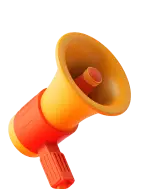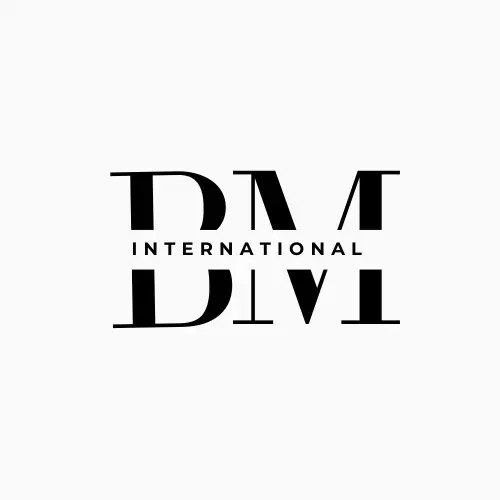Canva is a versatile, user-friendly graphic design platform that empowers anyone to create stunning visuals without design expertise. From social media posts to presentations, logos, and videos, Canva’s drag-and-drop interface and AI tools make it a go-to for beginners, businesses, and educators. But what is Canva mostly used for? This guide explores its top applications, offering practical insights for beginners to harness Canva’s potential. With over 200 million monthly users, Canva’s popularity reflects its accessibility and power (Canva, 2025). Let’s dive into its most common uses and how you can start creating today!
Understanding Canva: A Quick Overview
Canva, launched in 2013, is an online design tool that simplifies graphic design for non-designers. Its drag-and-drop interface, vast template library, and AI-powered features like Magic Write and Magic Media make it ideal for creating professional visuals quickly. Available on web, mobile, and desktop, Canva serves beginners, small businesses, educators, and marketers. Its freemium model offers robust free tools, with premium features via Canva Pro or Teams.
Featured Snippet Opportunity:
Canva is mostly used for creating social media graphics, presentations, marketing materials, educational content, and videos, offering a drag-and-drop interface and templates for beginners.
Top Uses of Canva for Beginners
Canva’s versatility makes it a favorite across industries. Here are its most popular applications, tailored for beginners looking to create impactful designs.
1. Social Media Graphics
Social media is one of Canva’s primary uses, with millions creating posts, stories, and ads for platforms like Instagram, TikTok, and LinkedIn. Canva’s templates are pre-sized for each platform, ensuring pixel-perfect designs.
- What You Can Create: Instagram Reels, Facebook covers, Twitter (X) banners, Pinterest pins, and TikTok videos.
- How to Start: Choose a template from the Create a design dropdown, customize with your text, colors, and images, and use Magic Resize to adapt for multiple platforms.
- Why It’s Popular: Canva’s content planner (Pro feature) lets you schedule posts directly to social media, streamlining workflows.
- Example: A small business owner can design a vibrant Instagram Story for a product launch in minutes using Canva’s animated templates.
Pro Tip: Use Magic Write to generate catchy captions (e.g., “Write a fun Instagram caption for a coffee shop sale”).
How to Use Canva Code: A Beginner’s Guide to Interactive Designs
2. Presentations and Slides
Canva is widely used for creating engaging presentations for classrooms, boardrooms, or virtual meetings. Its templates offer professional layouts, and features like Magic Animate add dynamic transitions.
- What You Can Create: Business pitches, educational slideshows, webinar decks, and training materials.
- How to Start: Select Presentations from the homepage, pick a template, and customize with charts, icons, or videos. Use the Present feature for real-time delivery.
- Why It’s Popular: Canva’s collaboration tools let teams edit slides together, and Canva for Education is free for teachers and students, with 85 million users in 2023.
- Example: A teacher can create an interactive history lesson slide deck with embedded quizzes using Canva Code.
Explore Canva’s Design School for presentation tutorials.
3. Marketing Materials
Businesses, especially startups and small businesses, use Canva to design marketing collateral without hiring a designer. Its Brand Kit feature ensures consistent branding across assets.
- What You Can Create: Flyers, brochures, business cards, logos, and email headers.
- How to Start: Choose a template (e.g., “Flyer” or “Business Card”), add your logo and brand colors, and download in PDF or PNG format.
- Why It’s Popular: Canva’s print services allow direct ordering of physical materials, and Magic Resize adapts designs for digital or print.
- Example: A bakery can design a promotional flyer for a new cupcake line, using Canva’s stock photos and fonts.
Pro Tip: Upload your brand assets to a Brand Kit (Pro feature) for consistent designs across all marketing materials.
How to Use Canva AI the Right Way- A Beginner’s Guide to Stunning Designs
4. Educational Content
Canva for Education, launched in 2020, is a favorite among teachers and students for creating engaging learning materials. It’s free for verified educators and offers tools for collaborative projects.
- What You Can Create: Worksheets, infographics, posters, lesson plans, and virtual classroom backgrounds.
- How to Start: Sign up for Canva for Education, select a template (e.g., “Worksheet”), and customize with text, images, or charts.
- Why It’s Popular: Canva’s drag-and-drop interface is ideal for younger students, and teachers can integrate it with Google Classroom or Microsoft Teams.
- Example: A science teacher can design an infographic on the water cycle, using Canva’s charts and illustrations.
Pro Tip: Use Canva’s collaboration feature to let students co-create projects in real-time.
5. Video Content and Animations
Canva’s video editing tools are increasingly popular for creating short-form content for social media or professional videos for businesses.
- What You Can Create: YouTube thumbnails, TikTok videos, animated social posts, and corporate explainer videos.
- How to Start: Select Video from the homepage, upload your clips or use stock footage, and edit with Canva’s timeline editor. Add animations with Magic Animate.
- Why It’s Popular: Canva’s Text-to-Video AI (Magic Media) generates clips from prompts, and Beat Sync aligns music to video transitions.
- Example: A YouTuber can create a thumbnail with bold text and a transparent background using the Background Remover.
6. Personal Projects and Events
Canva is a go-to for personal designs, from party invitations to custom gifts. Its templates make it easy to create polished visuals for non-professional use.
- What You Can Create: Invitations, greeting cards, photo books, resumes, and vision boards.
- How to Start: Search for templates like “Birthday Invitation” or “Resume,” customize with personal photos, and download or share digitally.
- Why It’s Popular: Canva’s affordability (free for basic use) and ease make it accessible for one-off projects.
- Example: A parent can design a themed birthday invitation with Disney stock images for a child’s party.
Pro Tip: Use Canva Print to order physical copies of invitations or posters directly from the platform.
7. Data Visualizations and Infographics
Canva’s integration with Flourish and its chart tools make it a top choice for creating data-driven visuals.
- What You Can Create: Bar charts, pie charts, treemaps, and infographics.
- How to Start: Select Charts from the editor’s side panel, input data manually or import from a spreadsheet, and customize with colors and fonts.
- Why It’s Popular: Canva’s Flourish integration offers interactive visualizations, perfect for reports or websites.
- Example: A marketer can create an infographic showing sales trends, embedding it on a website with a code snippet.
8. Website Graphics and Simple Websites
Canva is used to design website elements or even full websites, especially for small businesses or personal portfolios.
- What You Can Create: Banners, icons, buttons, or one-page websites.
- How to Start: Choose Website from the homepage, select a template, and customize with your content. Export as HTML or share via a link.
- Why It’s Popular: Canva’s drag-and-drop editor simplifies web design, and integrations with Google Photos or Dropbox streamline asset uploads.
- Example: A freelancer can design a portfolio website with a hero banner and contact form in under an hour.
Why Canva Is So Popular
Canva’s popularity stems from its accessibility, affordability, and robust features:
- User-Friendly Interface: The drag-and-drop editor requires no design skills.
- Extensive Template Library: Over 250,000 templates cater to every need.
- AI-Powered Tools: Magic Write, Magic Media, and Canva Code enhance creativity.
- Collaboration: Real-time editing and commenting suit teams and classrooms.
- Freemium Model: Free tools are generous, with Pro at $12.95/month for premium features.
With 30 million+ users and a $6 billion valuation, Canva’s impact is undeniable.
How Beginners Can Get Started with Canva
- Sign Up: Create a free account at Canva.com using email, Google, or Facebook.
- Explore Templates: Use the search bar to find templates for your project (e.g., “Instagram Post”).
- Customize Designs: Drag and drop elements, upload images, or use Canva’s stock library.
- Download or Share: Export as PNG, PDF, or MP4, or share directly to social media.
- Learn More: Check Canva’s Design School for free tutorials.
Pro Tip: Start with a template to learn design principles like balance and contrast.
Common Mistakes to Avoid
- Overusing Templates: Customize templates to avoid generic designs, as 30 million+ users access the same library.
- Ignoring Brand Consistency: Use a Brand Kit to maintain cohesive visuals.
- Low-Resolution Exports: Choose high-quality export settings (Pro feature) for print or professional use.
- Skipping Collaboration: Share designs with team members for feedback to improve quality.
FAQs About What Canva Is Used For
Q: What is Canva mostly used for?
A: Canva is primarily used for creating social media graphics, presentations, marketing materials, educational content, videos, and personal projects like invitations. Its drag-and-drop interface and templates make it beginner-friendly.
Q: Can Canva be used for professional design work?
A: Yes, Canva is used by businesses for branding, marketing, and data visualizations. While not as advanced as Adobe Illustrator, its Brand Kit and collaboration tools suit professional needs.
Q: Is Canva free to use for all features?
A: Canva’s free plan includes thousands of templates and basic tools. Pro ($12.95/month) unlocks premium features like Magic Resize, Brand Kits, and more stock assets.
Q: Can students and teachers use Canva?
A: Yes, Canva for Education is free for verified educators and students, offering tools for worksheets, presentations, and collaborative projects.
Q: Can Canva create videos?
A: Yes, Canva’s video editor supports creating and editing videos, including YouTube thumbnails, TikTok clips, and animated social posts.
Tips for Maximizing Canva’s Potential
- Use AI Tools: Experiment with Magic Write for text and Magic Media for images/videos.
- Leverage Integrations: Connect Canva to Google Drive, Dropbox, or social platforms for seamless workflows.
- Learn Design Basics: Canva’s Design School teaches typography, color theory, and layout principles.
- Collaborate: Invite team members to edit or comment on designs in real-time.
- Experiment: Try Canva Code for interactive widgets like calculators or timers.
Check out Social Media Examiner for Canva tips tailored to marketing.
Canva’s Limitations
While Canva is versatile, it’s not perfect:
- Not for Complex Design: It lacks the precision of Adobe Illustrator for custom vectors or logos.
- Template Overuse: Designs can look generic without customization, as millions use the same templates.
- Internet Dependency: Canva requires an online connection, limiting offline use.
- Data Breach History: A 2019 breach affected 139 million users, though Canva has since improved security.
Who Uses Canva?
Canva serves a wide audience:
- Beginners: Non-designers creating quick visuals.
- Small Businesses: Startups designing affordable marketing materials.
- Educators/Students: Teachers and students crafting educational content.
- Marketers: Teams creating social posts, ads, and reports.
- Freelancers: Designers producing client assets quickly.
With 58.33% female and 41.67% male users, Canva’s appeal is universal.
Conclusion: Start Creating with Canva Today
Canva is mostly used for social media graphics, presentations, marketing materials, educational content, videos, personal projects, and data visualizations. Its intuitive interface, vast template library, and AI tools make it a top choice for beginners and professionals alike. Whether you’re designing a flyer for your business or a worksheet for your classroom, Canva simplifies the process without sacrificing quality. Ready to try it? Sign up for a free Canva account, pick a template, and create your first design today. Share your project in the comments—what will you make with Canva?






